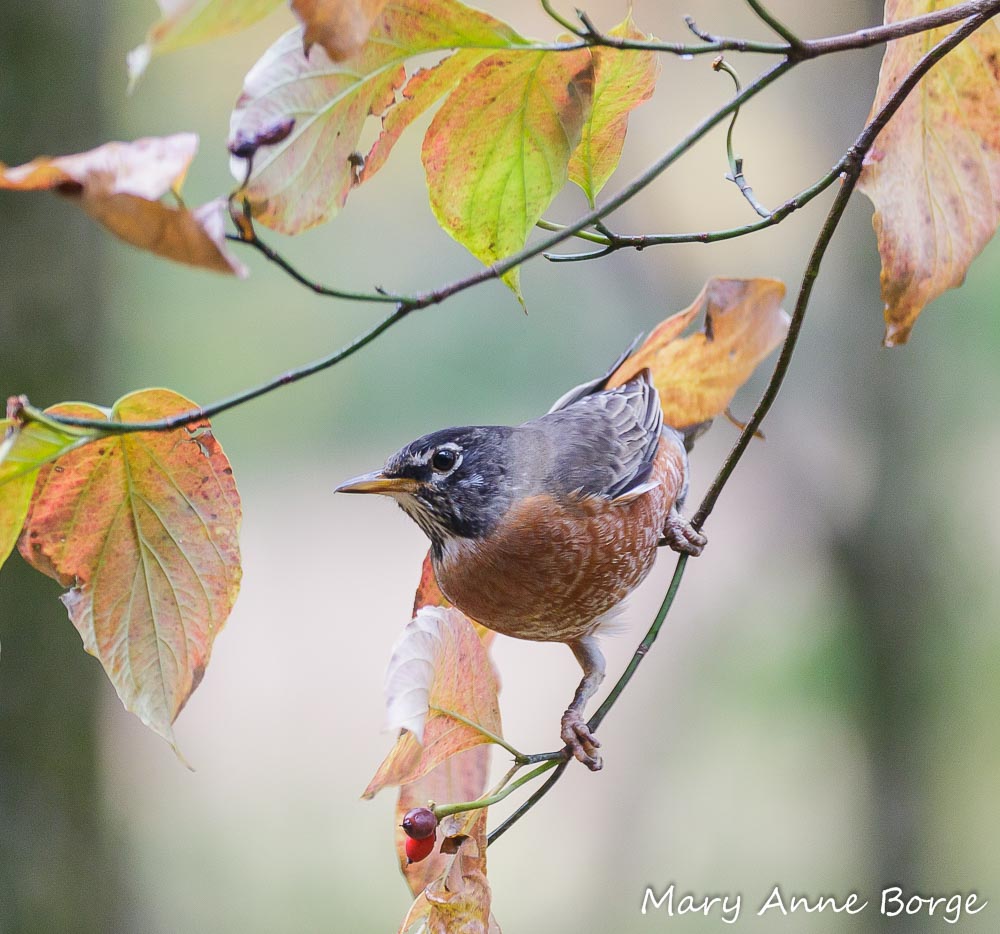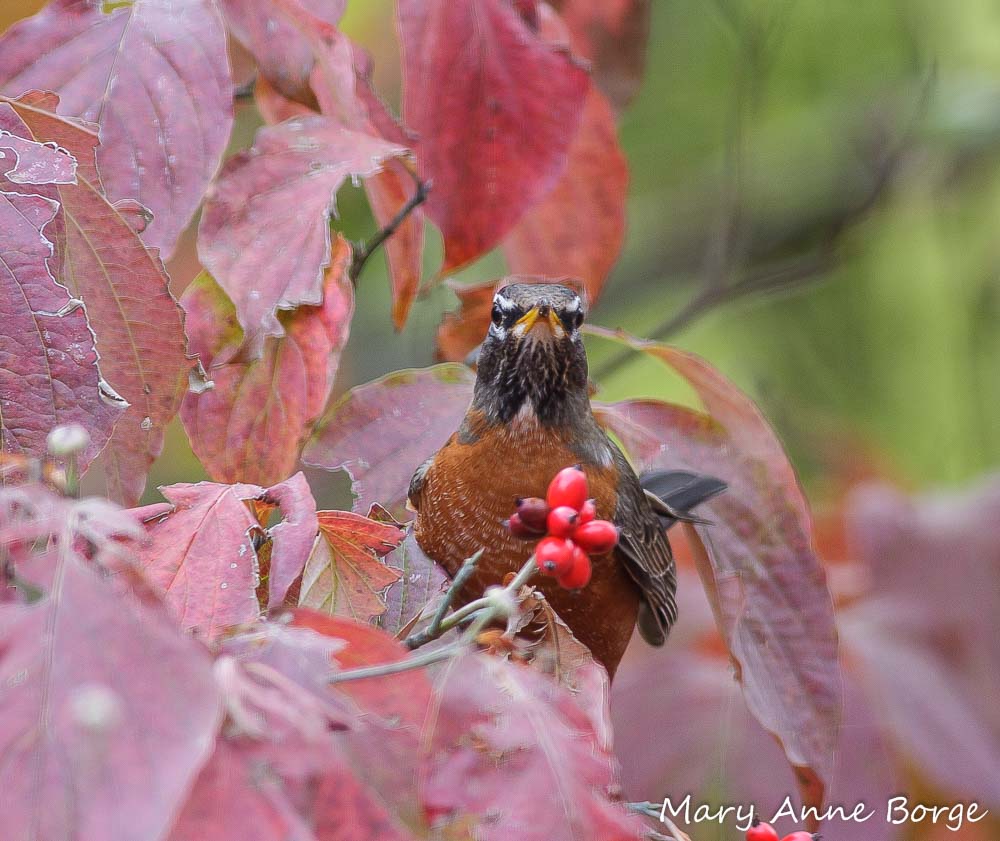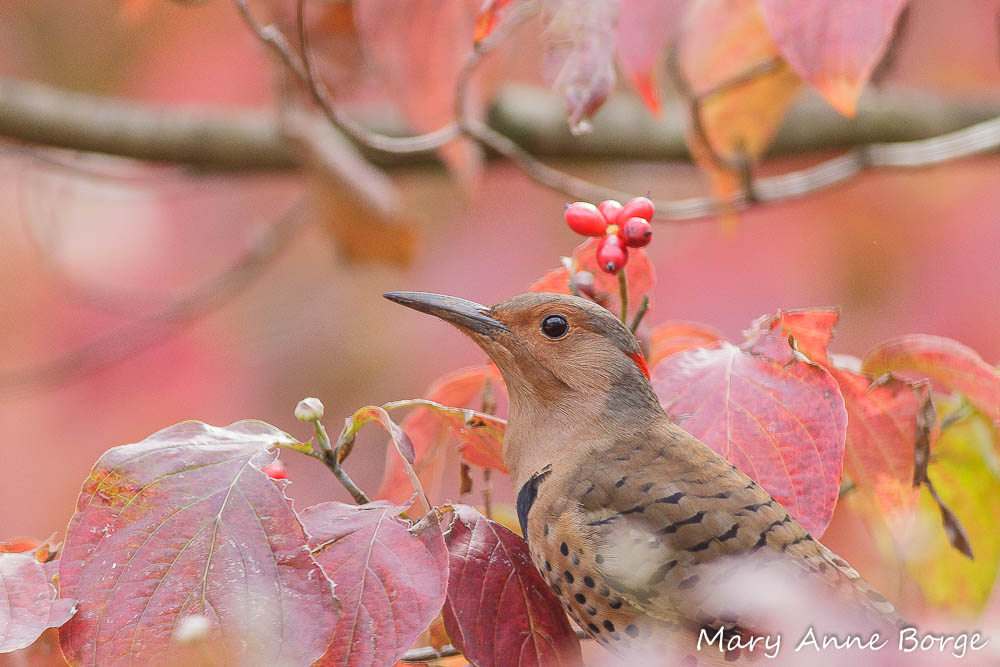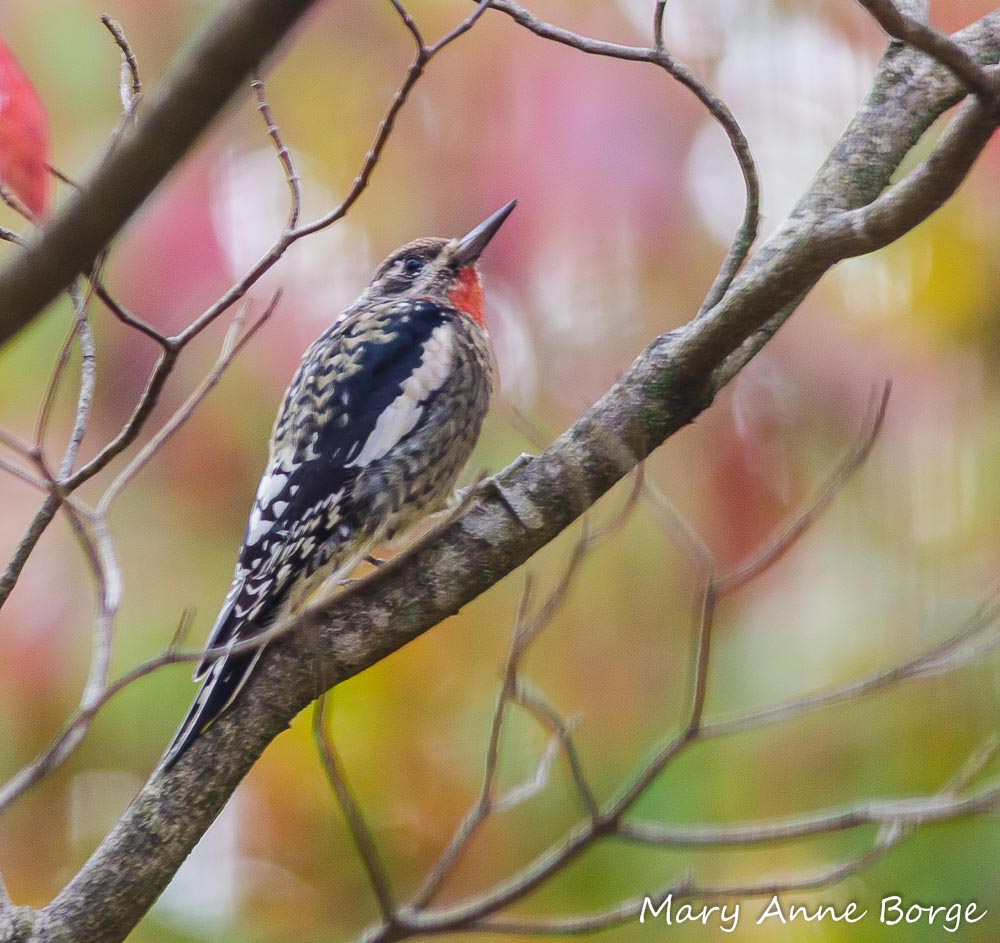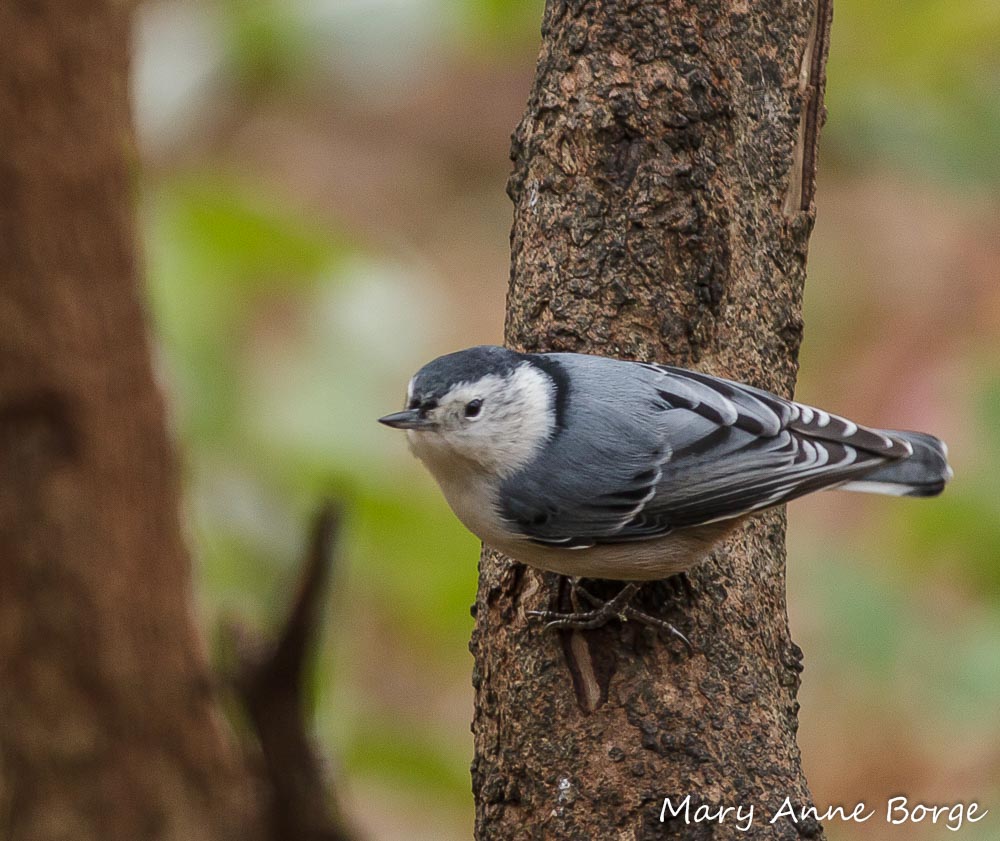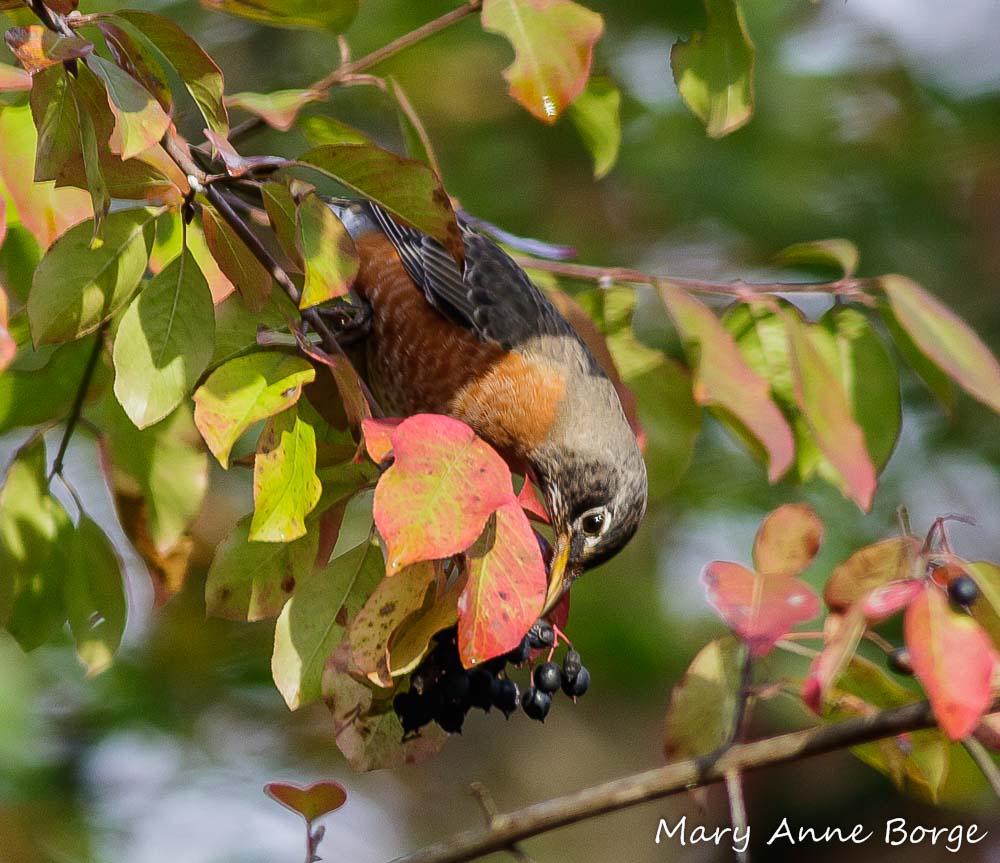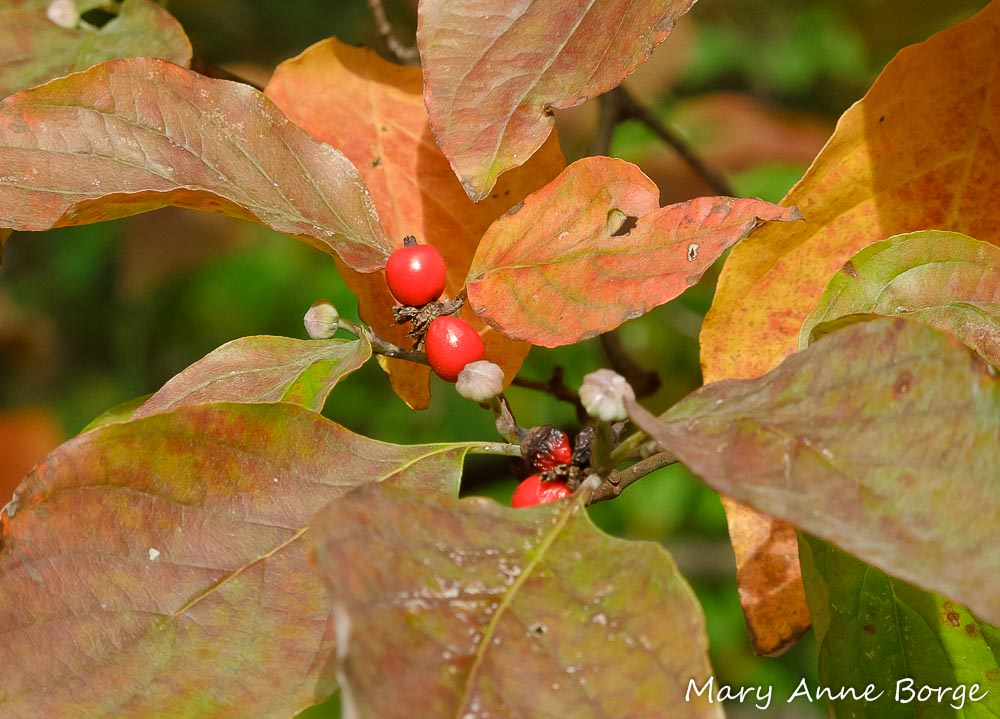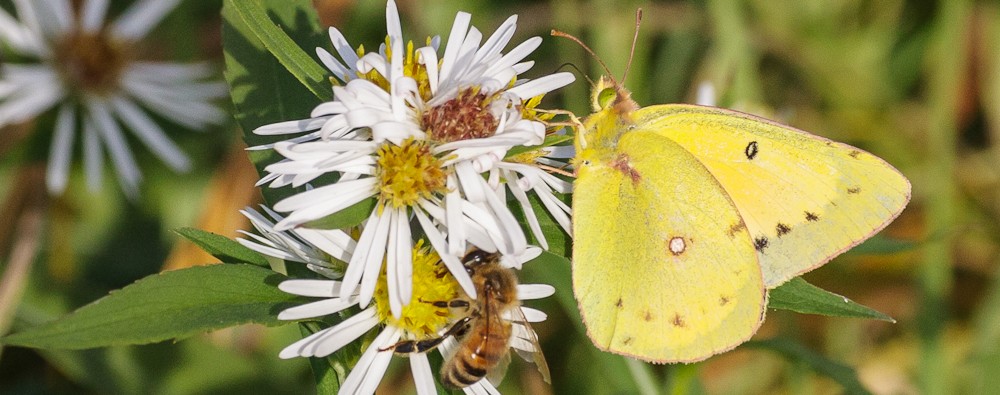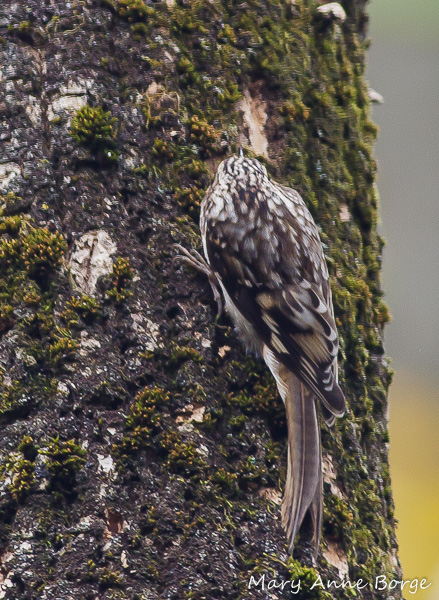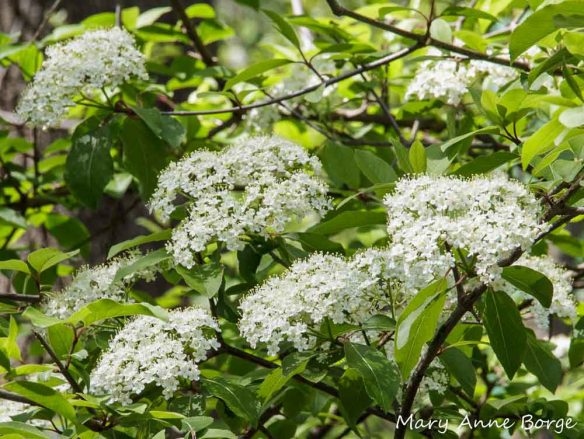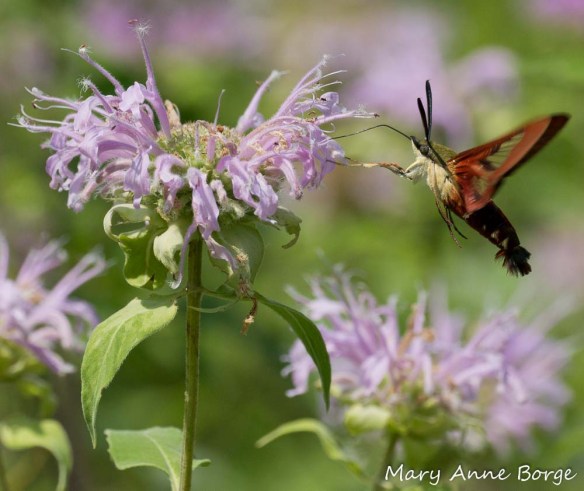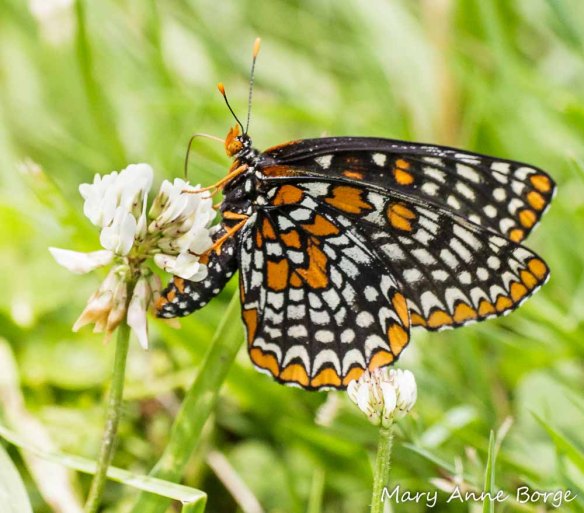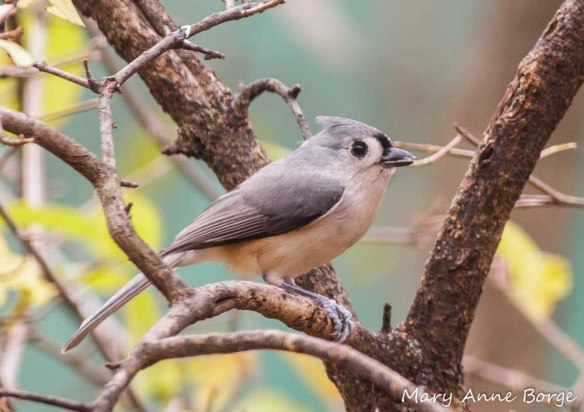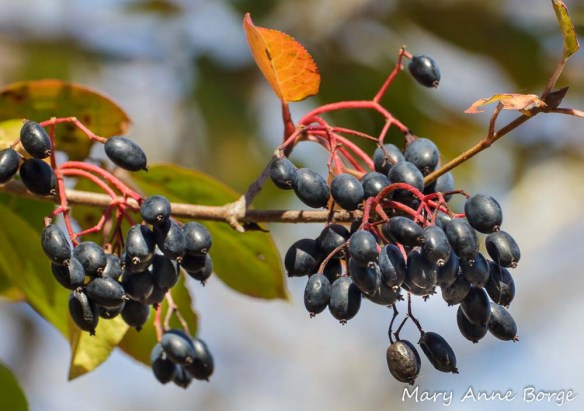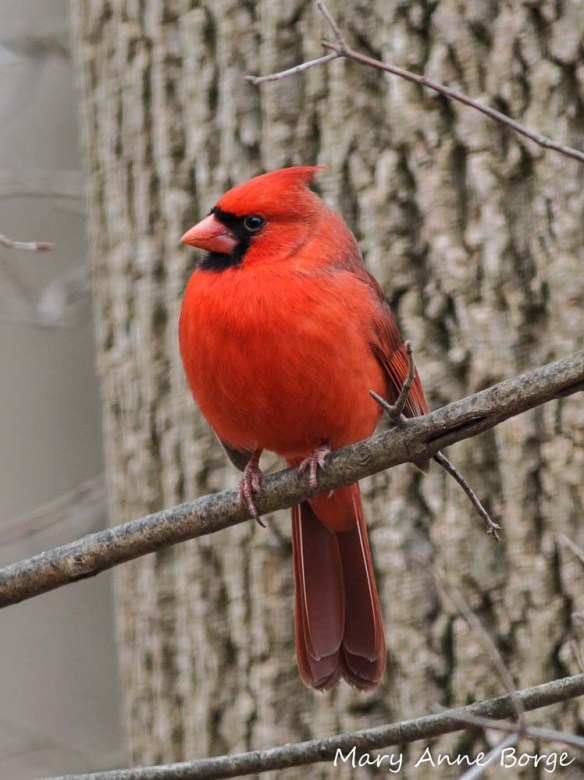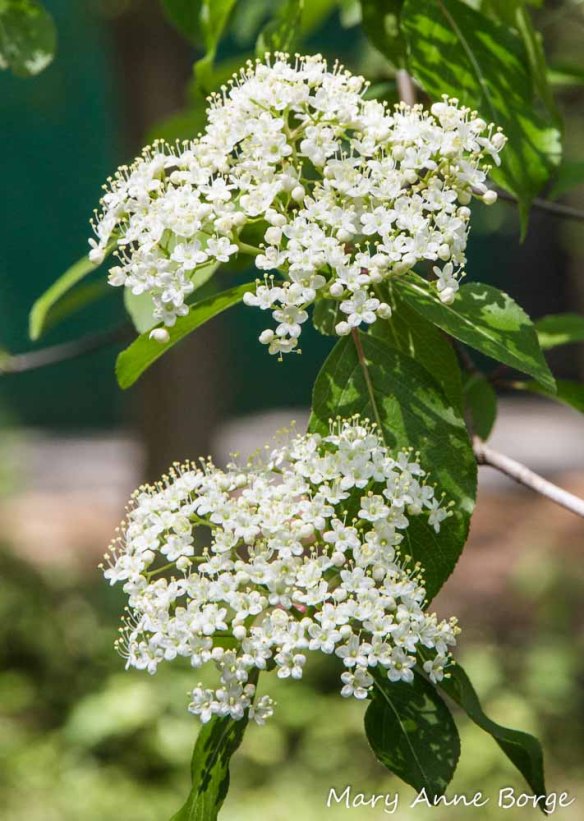Is it possible to have a perennial shade garden with continuous bloom throughout the summer and fall? By June, the trees are fully leafed out, sheltering our home from the summer sun’s strong rays. That means that the garden is in the shade, too. Will anything be blooming? You bet.

Spicebush Swallowtails nectaring on Bottlebrush Buckeye
Some spring bloomers, like Heartleaf Foamflower (Tiarella cordifolia) and Virginia Goldenstar (Chrysogonum virginianum), also called Green and Gold, may continue their display into the summer months. While not yet blooming, the leaves of White Wood Aster (Eurybia divaricata) join the violets, ferns, and Spreading Sedge (Carex laxiculmis) to form a ground cover blanketing much of the garden. Arching four to five feet above them are long sprays of Goat’s-beard (Aruncus dioicus) a.k.a. Bride’s Feathers’ tiny white flowers, lighting up the deep shade. June brings Rosebay Rhododendron (Rhododendron maximum) and Wild Hydrangea (Hydrangea arborescens) blossoms, too.
Bottlebrush Buckeye (Aesculus parviflora) is part of the shrub layer in the woods behind our house. In July, this reliable bloomer with its large palmately compound leaves and tall spikes of white tubular flowers attracts Ruby-throated Hummingbirds in addition to Spicebush and Eastern Tiger Swallowtails.
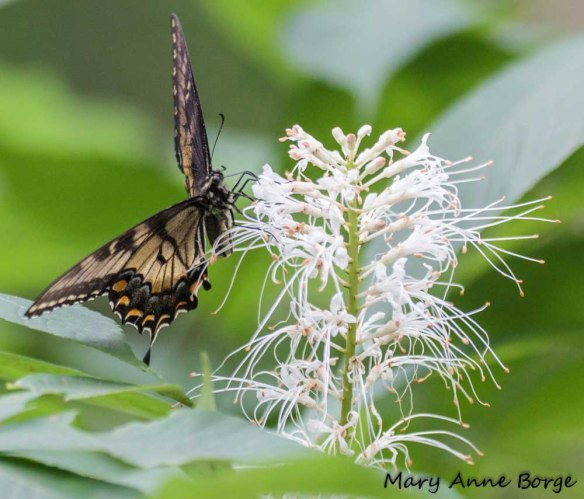
Dark form Eastern Tiger Swallowtail nectaring on Bottlebrush Buckeye
Last summer we were surprised to see dark morph Tiger Swallowtails nectaring on the Bottlebrush Buckeye. By adopting this Pipevine Swallowtail-like coloration disguise, the Tiger Swallowtails gain some protection from being eaten by birds and other predators who have learned of the Pipevine Swallowtail’s toxicity. The dark morph occurs most frequently in areas where Pipevine Swallowtails are present. Maybe Dutchman’s Pipevine (Aristolochia macrophylla) and its namesake swallowtail are increasing in our area!
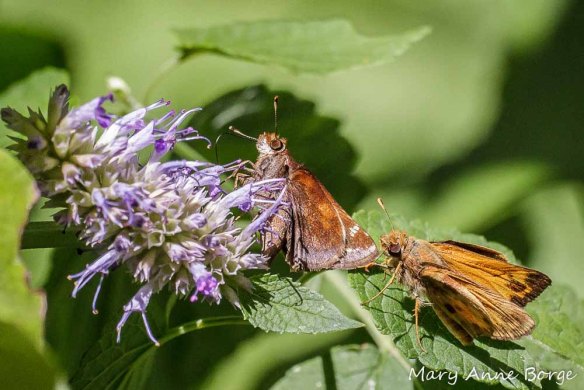
Courting Zabulon Skippers on Purple Giant Hyssop
July is also the beginning of Purple Giant Hyssop’s (Agastache scrophulariifolia) long bloom, lasting well into September. We have it in both deep shade and a spot that gets a few hours of afternoon sun, blooming dependably in both locations. This herbaceous plant is a great choice for a woodland garden, with a growth form that is similar to Butterfly Bush. In our garden, butterflies from the smallest skippers to the largest swallowtails love Purple Giant Hyssop. Bees love it, too, and even hummingbirds may drink from the nectar-packed purple flowers.
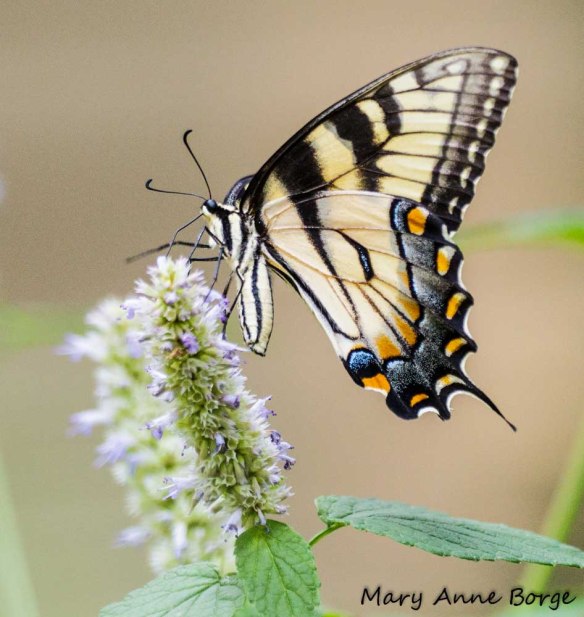
Eastern Tiger Swallowtail nectaring on Purple Giant Hyssop
Pollinators can’t resist Mountain Mints.
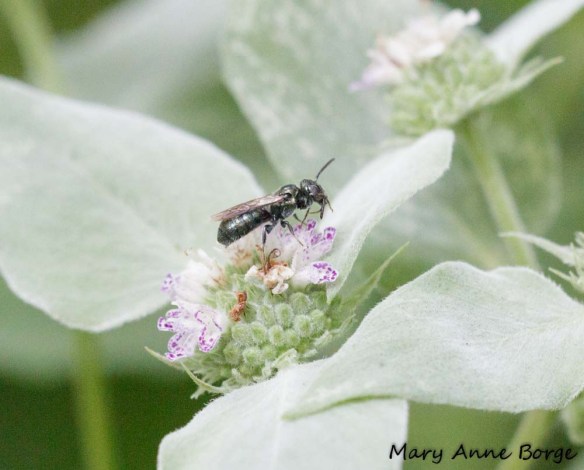
Sweat Bee (Lasioglossum species) on Short-toothed Mountain Mint
I decided to try Short-toothed Mountain Mint (Pycnanthemum muticum), also called Clustered Mountain Mint, the only one of the Mountain Mint (Pycnanthemum) species I thought could tolerate some shade. I put it in the one location that gets about four hours of afternoon sun, and I got lucky. While not as robust as it would be in a sunnier spot, it’s doing well, its tiny magenta and white blossoms enticing the smaller butterflies like azures and skippers throughout July and August.
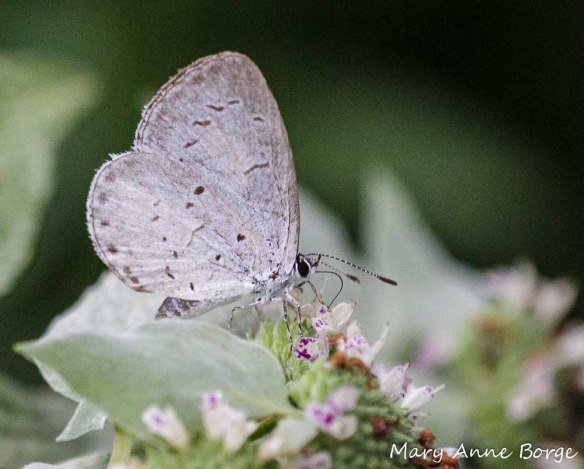
Summer Azure nectaring on Short-toothed Mountain Mint
As summer progresses, False Sunflower (Heliopsis helianthoides) radiates bright yellow sunbursts at the wood’s edge from July well into September.
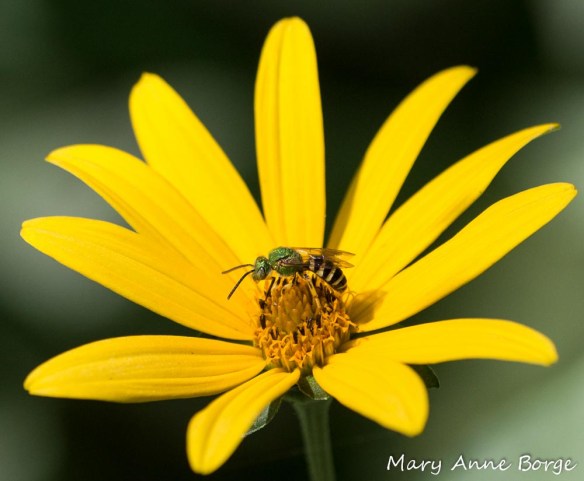
Sweat Bee (Agapostemom species) on False Sunflower (Heliopsis helianthoides)
Eastern Tiger Swallowtails and Bumble Bees are frequent diners at Great Blue Lobelia (Lobelia siphilitica), open for business during August and September. Even Ruby-throated Hummingbirds will stop here for a drink.
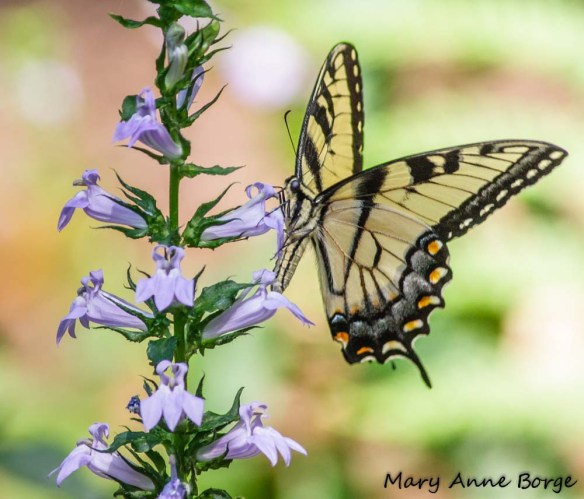
Eastern Tiger Swallowtail nectaring on Great Blue Lobelia
Also in August, after gathering energy from the sun from the earliest spring days when its leaves begin to emerge, White Wood Aster blinks on its light show of white blossoms, illuminating the dense shade through October. The delicate blue disk flowers of Carolina Elephantsfoot (Elephantopus carolinianus) provide a complementary offset in August and September.
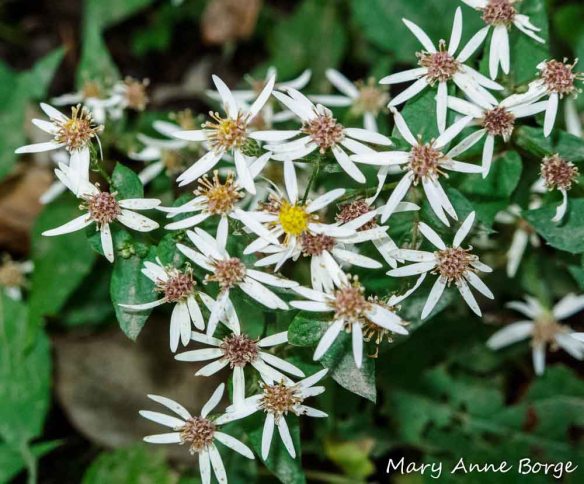
White Wood Aster
Butterfly traffic slows by September, but Black Swallowtails may still lay eggs this late, sometimes on my cooking herbs (parsley and dill).
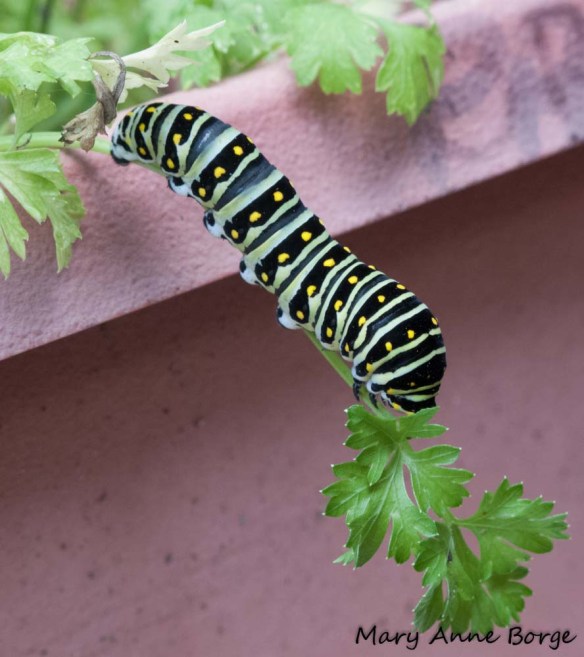
Black Swallowtail caterpillar eating parsley
Last fall we hosted a chrysalis on a hot pepper plant.
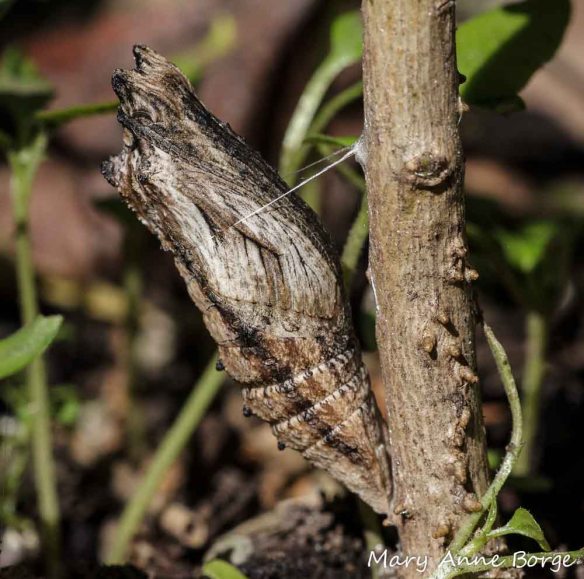
Black Swallowtail chrysalis on pepper plant
More aster family members begin their fall performance now, including Blue Wood Aster (Symphyotrichum cordifolium),
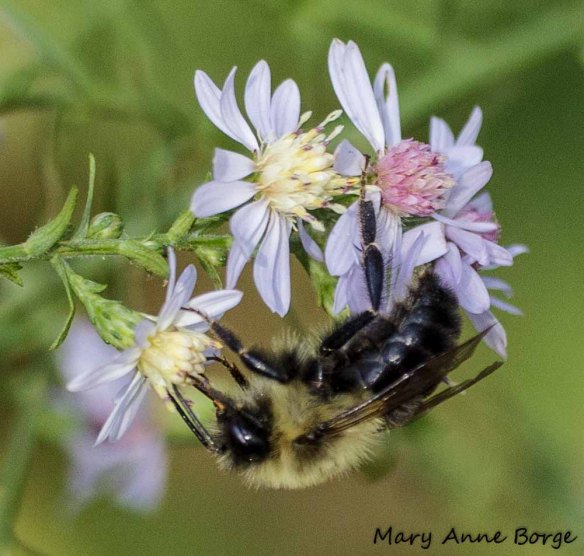
Blue Wood Aster with Bumble Bee
Wreath Goldenrod (Solidago caesia),

Wreath Goldenrod
and Zigzag Goldenrod (Solidago flexicaulis), in bloom and offering nectar through October or early November. Like White Wood Aster, all of the foliage of these species emerged in early spring from the winter’s leaf cover.
All of these summer and fall blooming species have a reproductive strategy that includes clusters or spikes of flowers that bloom gradually over a period of many weeks, increasing each plant’s chances of pollination by bees, butterflies, and others, and resulting in a long colorful garden display.When successfully pollinated, Purple Giant Hyssop, Carolina Elephantsfoot and Woodland Sunflower offer Chickadees, Goldfinches and other birds a fall bounty of food.

Goldfinch eating Elephant’s Foot seeds
Resident and migrant birds dine on the bright red fruit of Spicebush (Lindera benzoin) and Flowering Dogwood (Cornus florida) and the dark blue fruit of Sassafras (Sassafras albidum) and Blackhaw Viburnum (Viburnum prunifolium). This is after a busy season of acting as caterpillar food plants – Spicebush and Sassafras for Spicebush Swallowtails, Flowering Dogwood and Blackhaw for Spring Azures.

Flowering Dogwood fruit
In October and November, Witch-hazel’s (Hamamelis virginiana) spidery yellow blossoms complement the fall foliage.
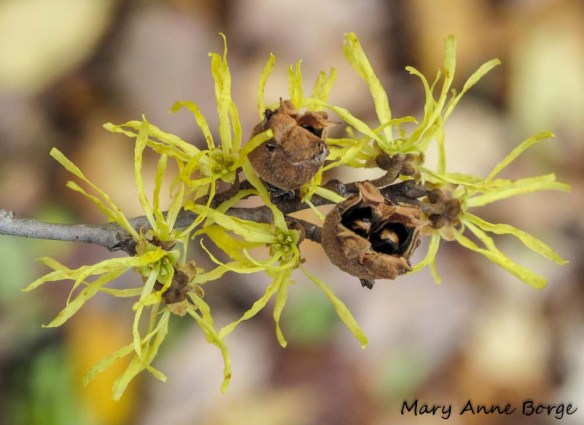
Witch-hazel flowers and fruits
The bright red fruits of Winterberry Holly (Ilex verticillata) may last until late winter, when hungry birds finally eat them.

Winterberry Holly berries
Little maintenance is required in this woodland garden. Because the plants have filled in to form a ground cover in most places, there is little weeding to do. We primarily use naturally fallen leaves as mulch, although we may supplement with a bit of prepared leaf compost around the front edges, in deference to our homeowners’ association’s sensibilities.
When we were trying to grow lawn in the shade, it was sparse, and we had problems with standing water after a heavy rainfall. Not anymore. The trees, shrubs and other plants in the garden, as well as the leaf litter, help the soil to absorb rainfall. The shade keeps the soil from drying out too quickly. So once these plants are established, watering is only required when drought conditions become extreme.
Not a bad performance for a woodland garden. And it brings so much pleasure!
Notes:
This is part 3 of a 3 part series. To see parts 1 & 2, see A Butterfly Garden That Embraces the Shade and A Butterfly Garden That Embraces the Shade – Spring.
This post was adapted from an article that was originally published in the Summer 2013 issue of Butterfly Gardener, a publication of the North American Butterfly Association.

